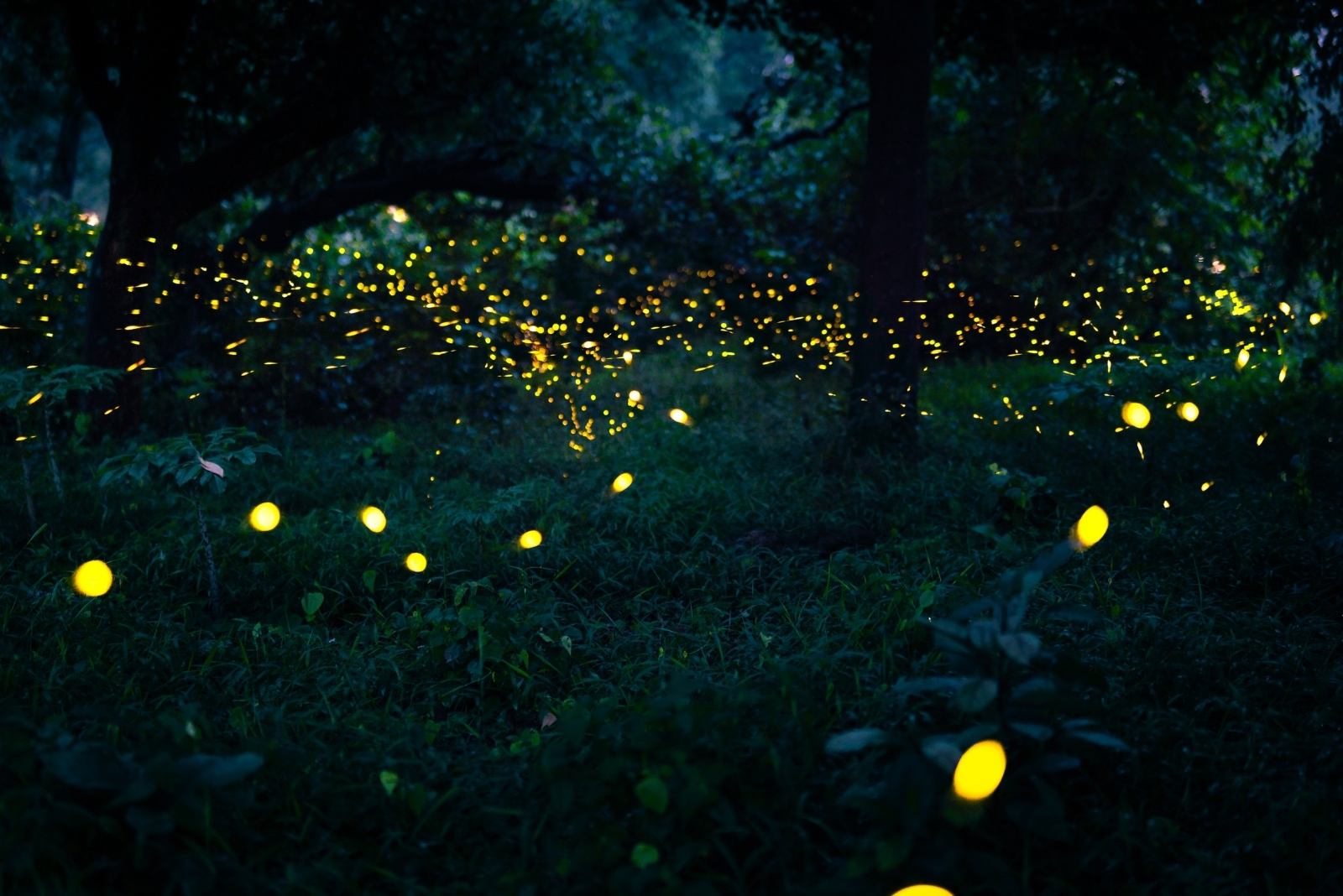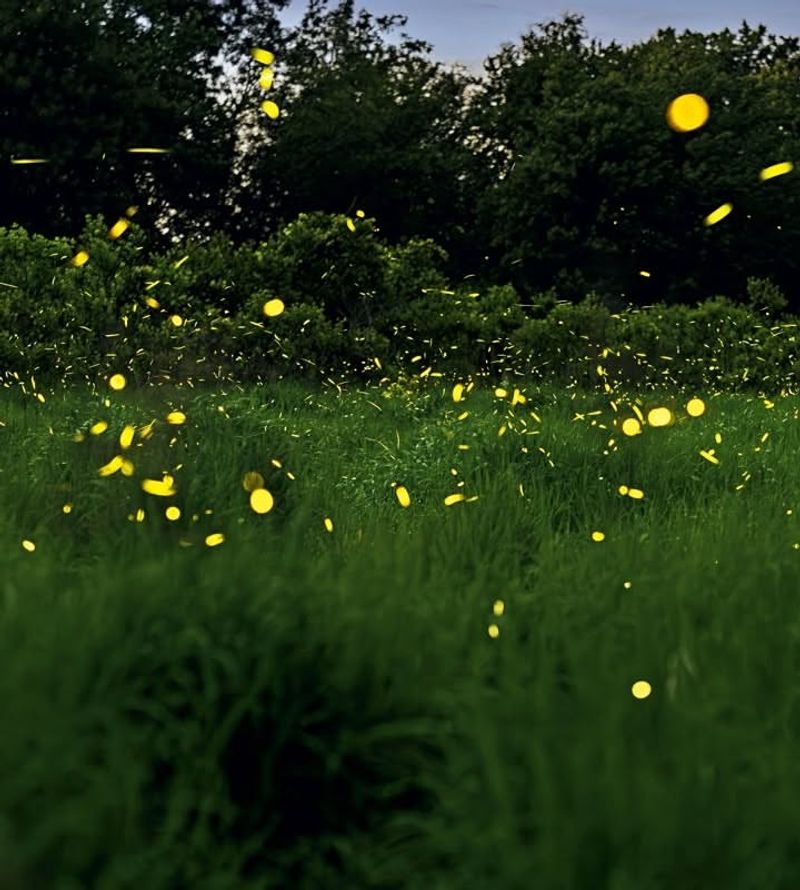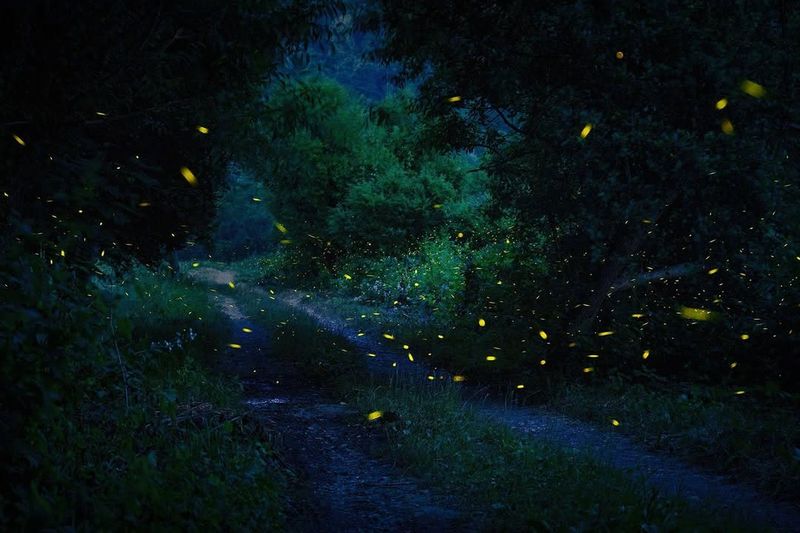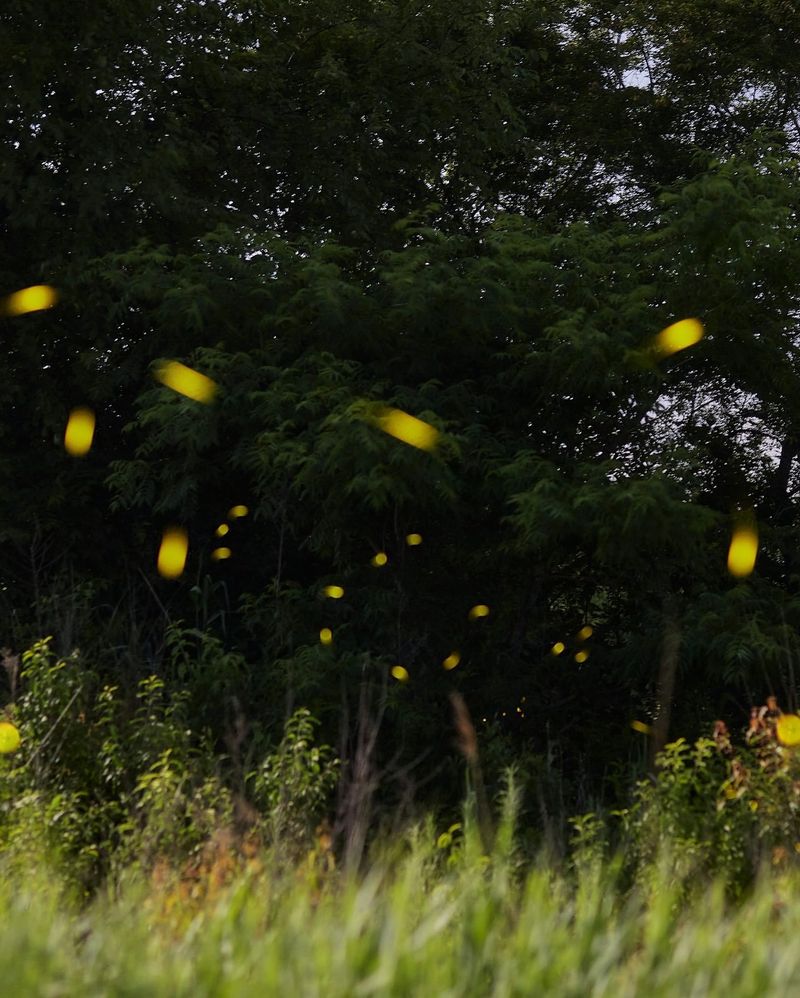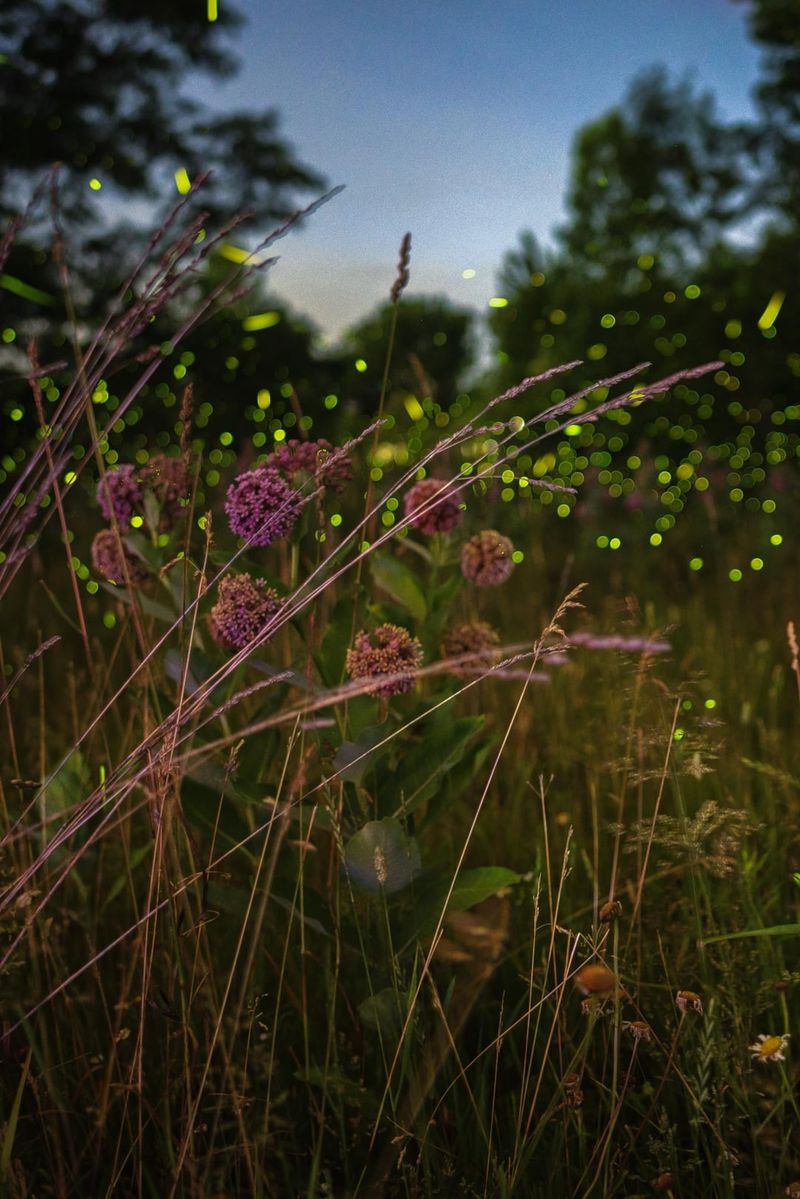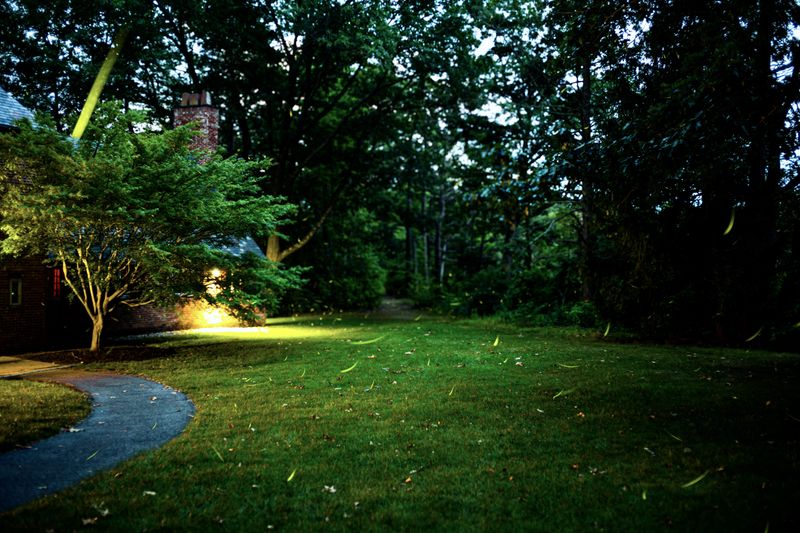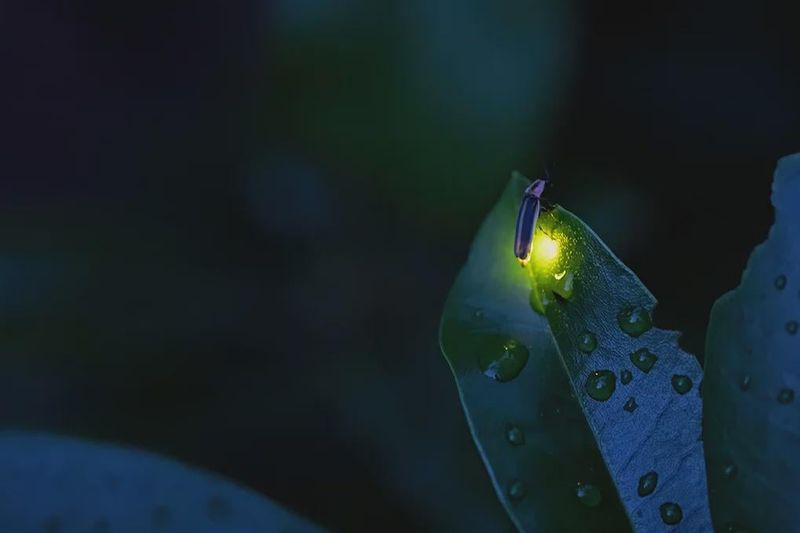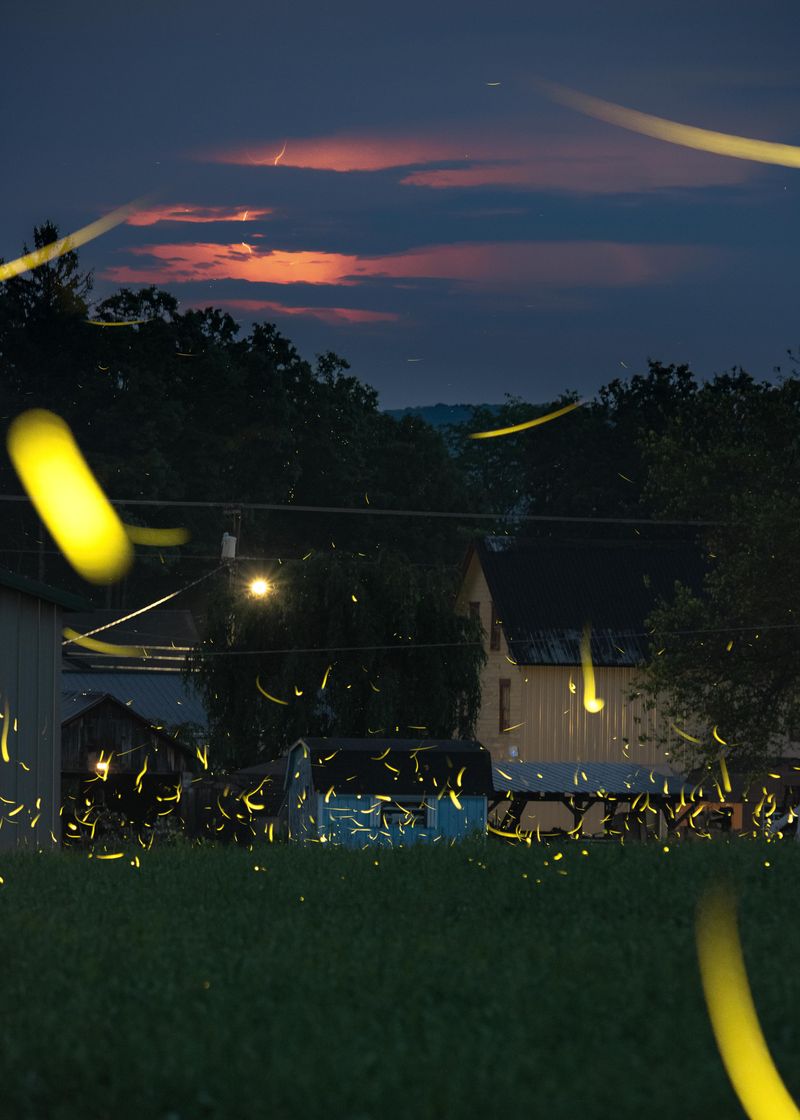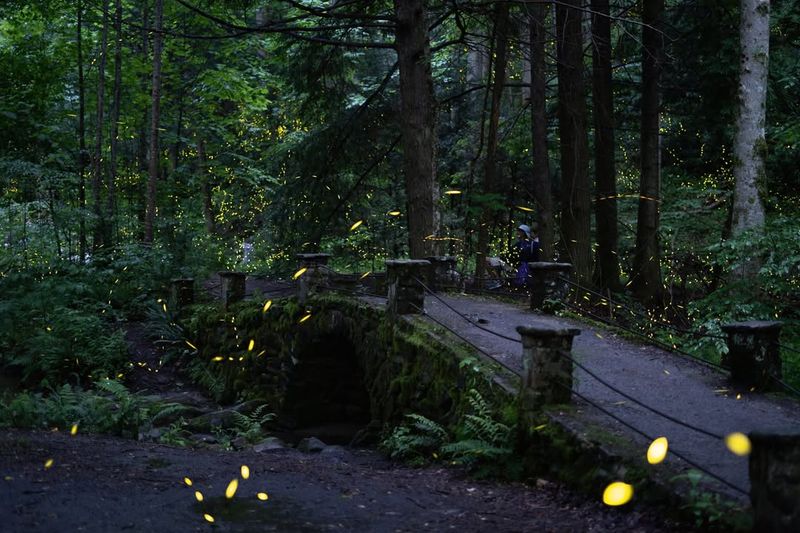Fireflies light up summer nights in Wisconsin, but their glow is fading. These 8 reasons uncover surprising facts about why numbers are dropping.
Protecting these magical visitors starts with understanding the problem. Learn how to give fireflies a fighting chance in your own yard.
1. Light Pollution Disrupts Mating Signals
Artificial lighting from Wisconsin’s expanding urban areas confuses fireflies during their courtship rituals. The male’s flashing pattern—meant to attract females—gets lost in the glow of streetlights and buildings.
When fireflies can’t find mates, their populations gradually decline. In rural Wisconsin communities that have installed more outdoor lighting, residents report seeing fewer lightning bugs each summer.
2. Pesticide Use in Agriculture
Wisconsin’s farmlands frequently receive pesticide treatments that harm more than just target pests. These chemicals seep into soil where firefly larvae develop, killing them before they ever take flight.
Many Wisconsin farmers aren’t aware that their pest control methods impact beneficial insects too. The state’s dairy industry relies on healthy pastures, but the chemicals used to maintain them may be silently eliminating firefly populations.
3. Habitat Loss from Development
Marshy areas and wild meadows where fireflies thrive are rapidly disappearing across Wisconsin’s landscape. New housing developments and commercial properties often replace these crucial habitats with manicured lawns.
Fireflies need specific moisture conditions and natural vegetation to complete their life cycle. Wisconsin’s expanding suburbs around Madison and Milwaukee continue to encroach on the undisturbed areas these insects need to survive.
4. Climate Change Alters Emergence Patterns
Warmer temperatures in Wisconsin are disrupting the delicate timing of firefly development. When spring arrives earlier, fireflies may emerge before their food sources are available or when conditions aren’t ideal.
Some Wisconsin species time their appearance with specific plants or prey insects. As climate patterns shift across the state, these synchronized relationships break down, leaving fireflies struggling to adapt to new seasonal rhythms.
5. Soil Moisture Reduction
Firefly larvae require consistently damp soil to develop properly. Wisconsin’s changing precipitation patterns have created drier conditions in many areas, particularly during crucial summer months.
Lakeshore communities in Wisconsin once boasted abundant firefly populations thanks to naturally moist environments. Now, extended dry periods combined with water table changes leave larvae without the humidity they need to survive their year-long development underground.
6. Lawn Care Practices Destroy Larvae
Those perfect Wisconsin suburban lawns come at a high cost to firefly populations. Regular mowing, leaf removal, and chemical treatments destroy the leaf litter where larvae hunt and develop.
Many Wisconsin homeowners don’t realize their autumn cleanup eliminates crucial winter protection for firefly young. The push for tidy, manicured yards throughout the state has created firefly-free zones where these insects once flourished by the thousands.
7. Invasive Earthworms Change Soil Ecology
Non-native earthworms introduced to Wisconsin forests are altering the soil composition fireflies depend on. These invaders consume the leaf litter layer where firefly larvae hunt for food and find protection.
Wisconsin’s northern counties, once firefly havens, now face changing forest floor conditions. As worms transform the soil structure, they inadvertently eliminate the microhabitats where young fireflies develop during their long larval stage.
8. Light-Seeking Tourism Disturbs Populations
The irony of firefly tourism is that it often harms the very creatures people come to admire. In popular Wisconsin nature preserves, visitors with flashlights and cameras disrupt mating behaviors during peak firefly season.
Conservation areas in central Wisconsin have seen declining numbers following increased summer tourism. Well-meaning visitors accidentally trample habitat, create light interference, and disturb the insects during their brief adult phase when reproduction is their sole focus.

